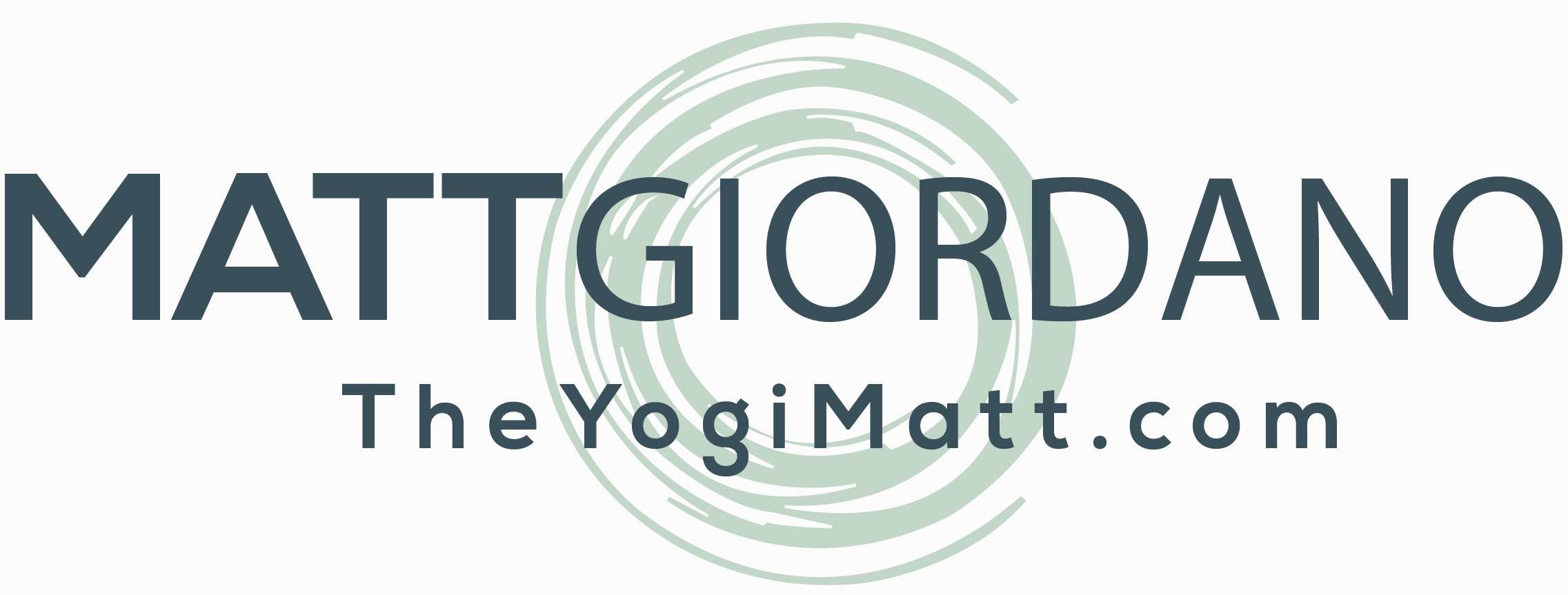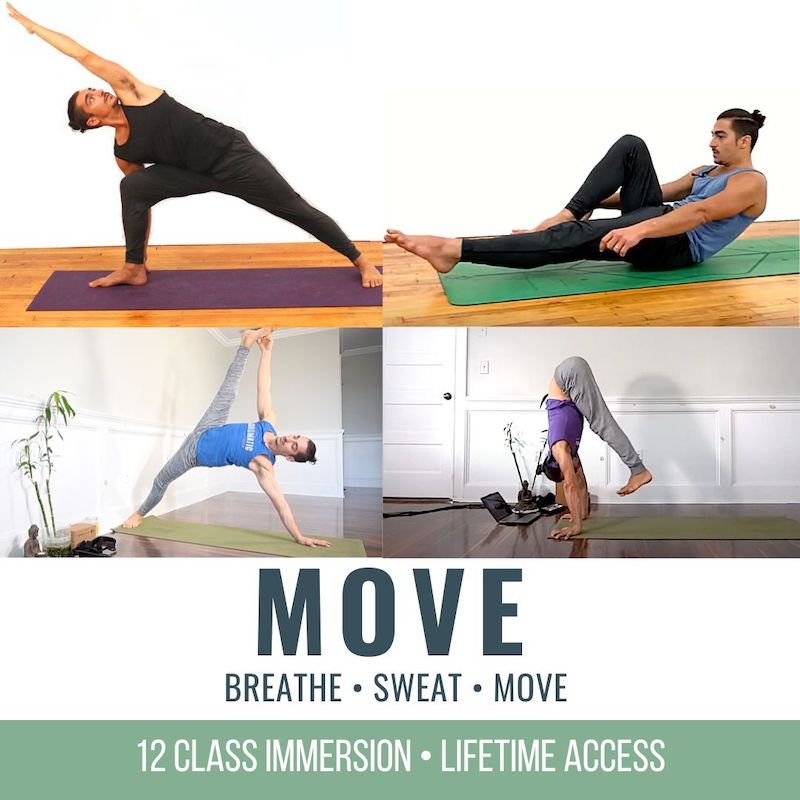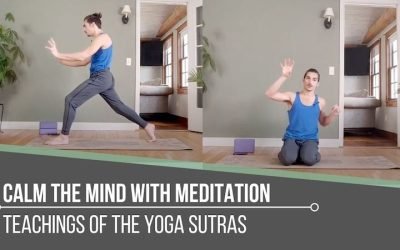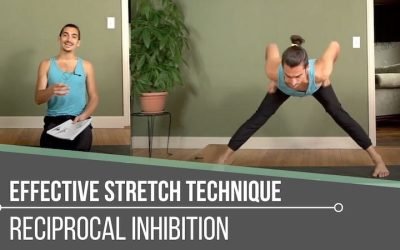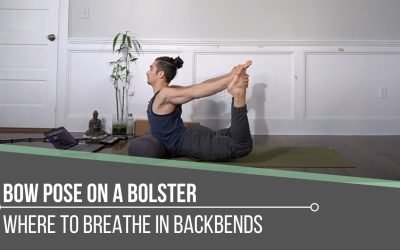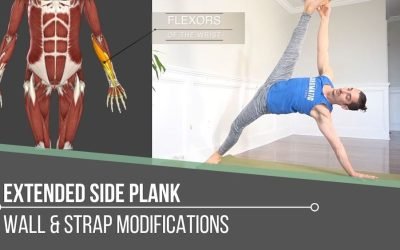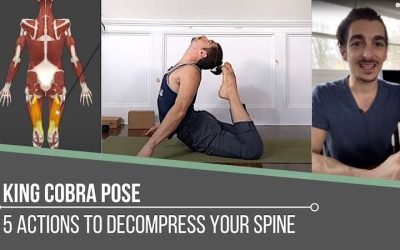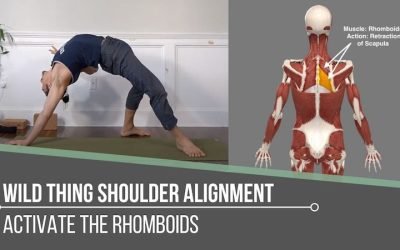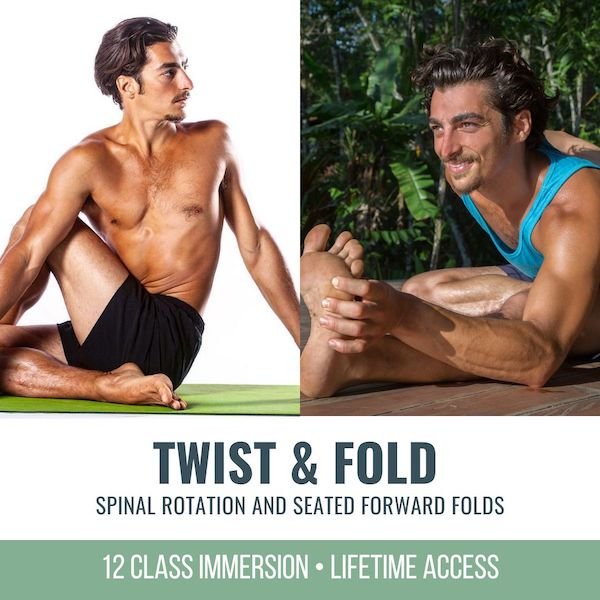CALM THE MIND GO BENEATH THE SURFACESUTRA 1.2CALM THE MIND“If restraint of the mental modifications is achieved, one has reached the goal of yoga.” This is taken directly from The Yoga Sutras of Patanjali (pg. 3). “Yoga is the experience we have when all vritti...
Smooth Seated Jump Throughs
Smooth Seated Jump Throughs
Skillful Transition Techniques Simplified
movement
SEATED JUMP THROUGHS
It’s true that seated jump throughs are an example of how to seamlessly create a link between two yoga postures, but they also provide a lot of information about how you move. It’s easy to find yourself more focused on the alignment, shape, and/or position of your body within a specific asana. This is not without good reason, because there is definitely a lot going on in a given posture, especially when you are considering when and how to create the appropriate muscle engagements in order to maximize the posture’s benefits. How you move and transition between each posture, however, also carries a great deal of weight within your yoga practice. In other words, what happens between each posture is extremely important. Moreover, your ability to control your body in order to maintain balance and safely move on your mat translates to how you move when you are off of the mat.
MOVE
- Access your movement potential
- Sweat and raise your heart rate
- Master your breath/movement coordination
- Increase mobility at all major joints
- Learn to gracefully transition between postures
- Improve your flexibility
- Strengthen your hips, back, shoulders, and core
- Improve your balance
- Each class will raise your heart rate, bring you to a sweat, and return you back to a relaxed state of mind and body
- 12 Classes: All levels appropriate
- Lifetime unlimited access to all
- Attend the livestream OR practice the replays any time that's convenient for you
$168.00
HOW ARE TRANSITIONS IN YOGA CONNECTED TO HEALTH?
Seated jump throughs are often used in Vinyasa- and Ashtanga-style practices to enter into seated postures more smoothly. Given the nature of these practices, which are more dynamic, this comes as no surprise. The pairing of movement with breath requires you to move with more “flow.” More vigorous practices like these provide benefits like increased strength or coordination and may even offer cardiovascular benefit. The benefits are not limited to the physical; these practices also improve cognitive function. Learning how to execute seated jump throughs offers much more than graceful ease on the mat.
WATCH THE VIDEO
SMOOTH SEATED JUMP THROUGHS: SKILLFUL TRANSITION TECHNIQUES SIMPLIFIED
MOVEMENT & CARDIOVASCULAR EXERCISE
Practicing a skill such as a seated jump through requires more sophisticated movement and repetition. Even if it is a “simple” transition for you, doing it repetitively throughout your practice will definitely build heat in your body and increase your heart rate. If seated jump through is a more ambitious endeavor, then practicing the skills Matt breaks down will both build heat and provide the cardiovascular benefit of this type of movement.
“It is widely accepted that regular physical activity is beneficial for cardiovascular health. Frequent exercise is robustly associated with a decrease in cardiovascular mortality as well as the risk of developing cardiovascular disease.”
When you watch the video, you’ll see the layering within the drills Matt offers. The effort involved in practicing the drills for the transition, along with this style of practice as a whole, will undoubtedly challenge you physically. Consistently practicing this way is the key to unlocking the benefits.
200 HOUR ONLINE TEACHER TRAINING
GET CERTIFIED & DEEPEN YOUR YOGA PRACTICE
- Deepen your yoga practice
- Build confidence speaking in front of groups in person and online
- Learn foundational class structures and templates
- Learn techniques for a wide range of yoga postures
- Get certified and highly qualified to teach yoga
- Yoga Alliance Globally Recognized Certification Program
MOVEMENT & COGNITIVE FUNCTION
The hippocampus is the part of the brain that is largely responsible for memory and learning. The researchers in this study “found the volume of the left hippocampus to be significantly greater among yoga-practitioners compared to age- and sex-matched controls with similar physical activity and fitness levels.”
The study finds that specifically asana has a significant impact in this area. Understanding this confirms the importance of movement and its impact on both the physical and the mental.
300 HOUR ONLINE TEACHER TRAINING
GET 500 HOUR CERTIFIED AS A MASTER TEACHER
Master your skill set as a teacher through refined techniques, anatomy, biomechanics, sequencing, philosophy, meditation techniques, theming, yoga business, and much more!
- Get 500 hour certified
- Learn anatomy, biomechanics, asana techniques
- Expand your teaching skills
- Masterful sequencing and verbal delivery
- Learn meditation and breathwork techniques
- Transformative tools: theming, dharma talks, satsang
SKILLFUL EXECUTION OF A SEATED JUMP THROUGH
As previously mentioned, Matt layers on each skill in order to make the practice of seated jump throughs more accessible.
In the video, you’ll see that Matt advises you to start from a “shortened Downward Dog” position, with hands wider than usual. From there, you’ll place one leg in front in order to cross at your shins as you glide your feet forward and then gently drop to a seated position. You have the option to then send both legs forward in order to start imprinting the full pattern of movement into your nervous system. In order to take the drill to the next step, you have the option to jump into the cross-legged seated position (important to note that you should land on the tops of your feet). This undoubtedly makes it more active (increasing your heart rate and the cardiovascular component). What is more, when you come to the tops of your feet, you’ll see how Matt demonstrates a play of buoyancy in the hips. This balance on your hands is also a great preparation for arm balances and for the strength required in the seated jump through when you start sending your legs forward with more fluidity.
Repeatedly practicing the skills required for seated jump throughs will only refine your movement and help you tap into the physical and mental benefits. There is so much more to uncover, as this only skims the surface.
Register for Matt’s next immersion, called Move, so that you may delve into your ability to move with ease and confidence on and off of the mat.
The 200 Hr. Teacher Training: Click Here to See the Next Start Date
The 300 Hr. Advanced Teacher Training: Click Here to See the Next Start Date
Article by Trish Curling
Video Extracted From: Vinyasa Immersion
MOVE
- Access your movement potential
- Sweat and raise your heart rate
- Master your breath/movement coordination
- Increase mobility at all major joints
- Learn to gracefully transition between postures
- Improve your flexibility
- Strengthen your hips, back, shoulders, and core
- Improve your balance
- Each class will raise your heart rate, bring you to a sweat, and return you back to a relaxed state of mind and body
- 12 Classes: All levels appropriate
- Lifetime unlimited access to all
- Attend the livestream OR practice the replays any time that's convenient for you
$168.00
Continue Learning
Calm The Mind with Meditation
hamstring stretch technique for wide legged forward fold
WIDE-LEGGED FORWARD FOLD INCREASE YOUR FLEXIBILITY WITH RECIPROCAL INHIBITIONPRASARITAa safe approach to increasing flexibilityIt’s not unusual to feel “stuck” in our yoga practice at times. We may come to a place in our physical practice where we are not...
Bow Pose: Where to Breathe in a Backbend
BOW POSE—WHERE TO BREATHE YOGA ANATOMY • BIOMECHANICS • TECHNIQUEBOW POSEThe Challenge of breathing in backbendsEver feel short of breath in a backbend? You aren't the only one. Where to breathe in a backbend is a popular question, and rightfully so. If you look at...
side plank variations
Side Plank Variations VASHISTASANA • MODIFICATIONS • TUTORIALSIDE PLANKExtended Side plank variations [Click Below to listen to the Audio Version of "Extended Side Plank"]There are definitely more ways than one to access a yoga posture. Not only that, but Matt is...
King Cobra Pose Tutorial
KING COBRA POSE YOGA ANATOMY • BIOMECHANICS • TECHNIQUEKING COBRA5 Key Actions to Decompress Your Spine in King Cobra PoseNot all that glitters is gold, and without the right approach, this glorious backbend may not be a shining example of spinal health. King Cobra...
Wild Thing Shoulder Alignment
WILD THING SHOULDER ALIGNMENT ANATOMY • BIOMECHANICS • TECHNIQUEShoulder AlignmentWILD THING SHOULDER ALIGNMENTWhat is the correct shoulder alignment for the pose we call Wild Thing? To answer this, we would first have to define the guidelines for "right" and "wrong."...
THE FREE TECHNIQUE PACK
When You Subscribe, You Will Get Instant Access to
- the Technique Pack: 15 yoga pose breakdowns
- exclusive online course discounts
- exclusive blogs and videos
